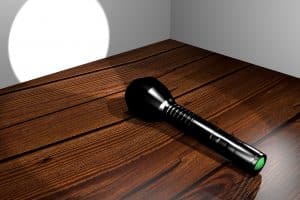Do It Yourself Bug Sweep
You think you’re the target of electronic eavesdropping. Attempting to validate your suspicions, you search the Internet. Next, you read articles to learn all you can about bug sweeps and spy gadgets. You feel like you have a good grasp of the topic. So you call professional bug sweep companies for a quote. The price is more than you expected. Then, you decide to Google “do it yourself bug sweep“. You are smart and know a bit about electronics. And, you consider yourself a do it yourself aficionado. You set up your wifi network and installed a video surveillance system outside your home. How difficult can it be to perform your own bug sweep?
Let’s take a closer look at some of the online suggestions for a do it yourself bug sweep:
Do It Yourself Bug Sweep – Physical Search
Yes, a physical search is important. Articles online suggests you start with the room of most concern. Maybe you suspect the spy
Maybe your search turns up no surreptitious audio or video bugging devices. Or, you find what you think is a bugging device, but you aren’t certain and don’t know what to do next. If your physical search turns up nothing, can you accept the results?
The good and bad of physical searches
Don’t discredit the importance of a physical search. A physical search is an important part of a professional bug sweep too. But, even if you are very observant, you can still miss a bugging device in the physical search. Spy gadgets are built into common household items like water bottles, key fobs, picture frames, air fresheners, etc. They can be out in the open or extremely well hidden. And, electronic eavesdropping can occur without a purpose built audio or video bugging device. That’s right. Your bluetooth earpiece, your cellphone, your wifi, etc. can be exploited for electronic eavesdropping purposes. How will your physical search detect these issues? You may be able to perform a physical search to locate some types of bugging devices. But, a physical search alone will not locate all potential threats. And, it may take hours upon hours depending on the density of the room(s) and the size of the area(s). In the end, you may have more questions than answers after performing the physical search do it yourself bug sweep.
Do It Yourself Bug Sweep – Flashlight Search for Hidden Cameras
So, there are a multitude of articles on the Internet about finding a hidden camera with a flashlight search. Yes, you can use a flashlight to detect hidden cameras. To do this, you want the room to be as dark as possible. Search the room in a grid pattern. When the light beam from the flashlight passes over the camera lens, the lens reflects like a cat’s eye. It’s pretty obvious. But, not if the camera has a smoked glass cover. And, if you search too fast, you may miss a pin hole sized camera. And, have you considered the camera in your cellphone or computer may be used for surreptitious purposes? It can be!
A professional bug sweep includes camera detection for all types of video bugging devices. And, it should also include checking for spyware/malware on your cellphone, tablet, laptop and computer. A simple click on a link that downloads spyware/malware on your device may be all it takes for a spy to use your device’s camera for surreptitious purposes. The do it yourself bug sweep flashlight test won’t detect that!
Do It Yourself Bug Sweep – Inexpensive RF Detectors

How will you be able to tell which signal is emanating from which device(s) if the device isn’t in your space? If your power is off, then do you assume that all RF transmission are surreptitious? And, if the audio or video bugging device(s) is hard wired into your electric and you turn off the power, you won’t be able to detect the hard wired device anyway.
What’s Your Best Option?
In 2021, the global surveillance technology market was estimated at USD $90 billion. Audio and video bugging devices are readily available, less expensive and easier to use than ever. Many audio and video bugging devices are embedded in every day objects you may not suspect. And, your own devices can be even used as electronic eavesdropping devices.
Modern cyber TSCM bugging devices use a network like wifi, bluetooth or cellular to push information to the eavesdropper. That means the eavesdropper doesn’t need to come into your space to get a device to get the info. Instead, your private info is pushed to their device.
ComSec LLC is routinely contacted by people who try to perform a do it yourself bug sweep. They may have completed a physical search and found nothing. Some are sure there are cameras in their home but the flashlight test didn’t reveal any. Maybe they bought an inexpensive RF detector and it alarmed all over their home. So, after the do it yourself bug sweep option failed, their next call is to ComSec LLC for a professional home bug sweep. The do it yourself bug sweep is really just not the best option.
About the Author:
J.D. LeaSure, CCISM, is the President / CEO of ComSec LLC, a global provider of world class counterespionage and TSCM / Cyber TSCM™ services. www.ComSecLLc.com



